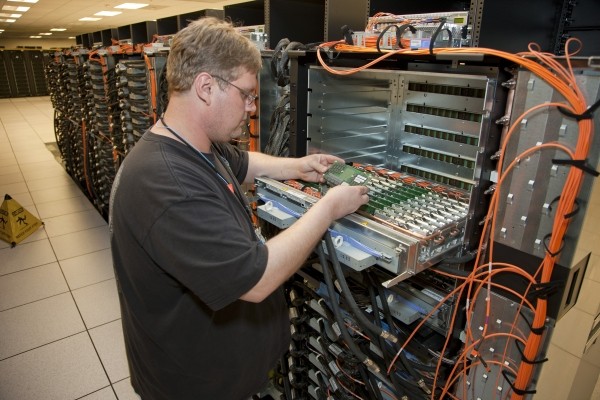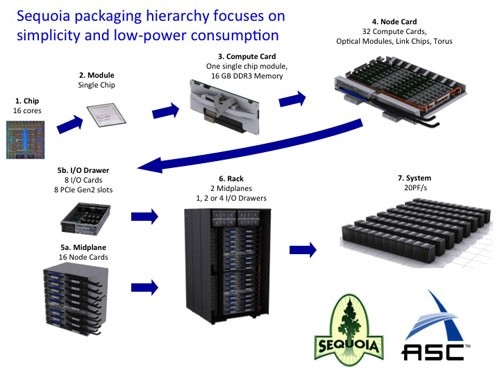Leeky
Posts: 3,357 +116
IBM's latest supercomputer, Sequoia, has taken the crown as the world’s fastest supercomputer in the TOP500 List after achieving 16.32 petaflops. That was enough to beat Japan's Fujitsu built supercomputer and marks the first time in over two years the US has topped the fastest supercomputer rankings.
Sequoia will be put to use by the US Department of Energy at their Lawrence Livermore National Laboratory (LLNL) for carrying out simulated nuclear weapons testing, helping figure out how to extend the life of aging nuclear weapons and also to avoid live underground tests.

"While Sequoia may be the fastest, the underlying computing capabilities it provides give us increased confidence in the nation's nuclear deterrent," said National Nuclear Security Administration administrator Thomas D'Agostino. "It also represents continued American leadership in high performance computing."
Sequoia provides an astounding 16.32 petaflops of computing performance, around 16 thousand trillion calculations per second and comprises of 96 racks containing 98,304 compute nodes, 1.6 million processor cores and 1.6 petabytes of RAM covering over 4,500 square feet of floorspace.
"For a machine with 1.6 million cores to run for over 23 hours six weeks after the last rack arrived on our floor is nothing short of amazing," LLNL division leader Kim Cupps told Ars Technica. It achieved this score by running the Linpack benchmark for 23 hours solid without a single core failing, although the unit is actually capable of exceeding 20 petaflops.

In comparison, Japan's Fujitsu built K Computer housed in the RIKEN Advanced Institute for Computational Science has 705,000 processing cores giving 10 petaflop. Japan's supercomputer previously took the crown from a Chinese built supercomputer. The last time the US held the top spot was back in November 2009.
Despite its enormous size, IBM boasts the supercomputer is actually very efficient. It consumes 7,890 kilowatts of power at full load, whereas Japan's now second-placed K Computer consumes considerably more at 12,659 kilowatts. Its reduced power consumption is due in part to its primary cooling system, which uses water running through tiny copper pipes encircling each node card.
The entire supercomputer runs on Linux, with Compute Node Linux running on nearly 98,000 nodes, and Red Hat Enterprise Linux running on 768 I/O nodes that are connected to the filesystem.